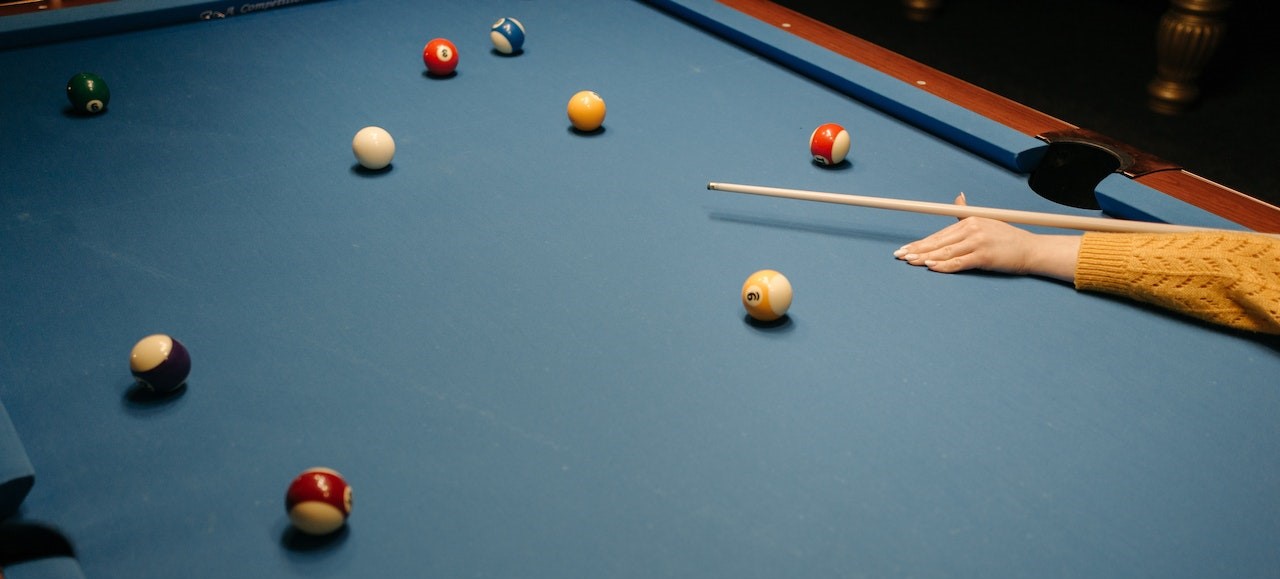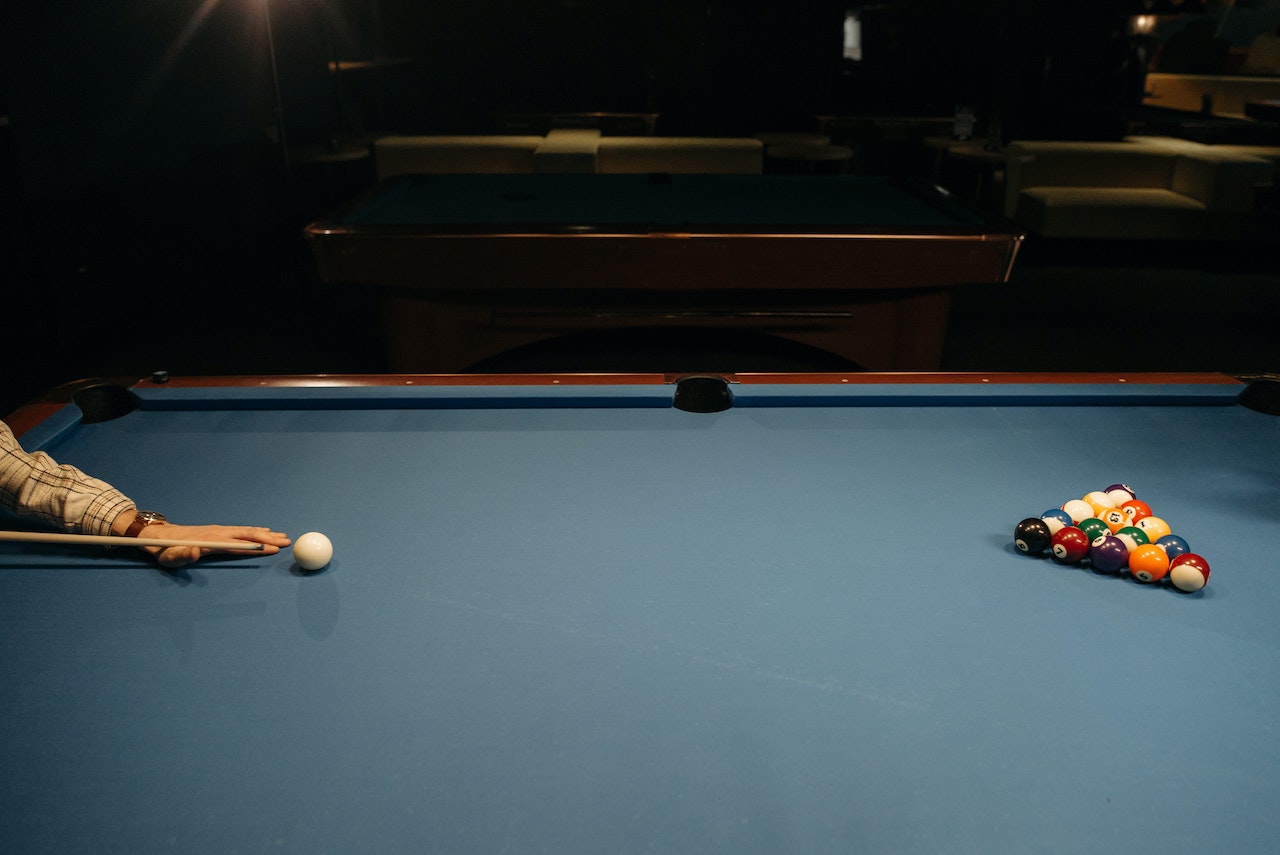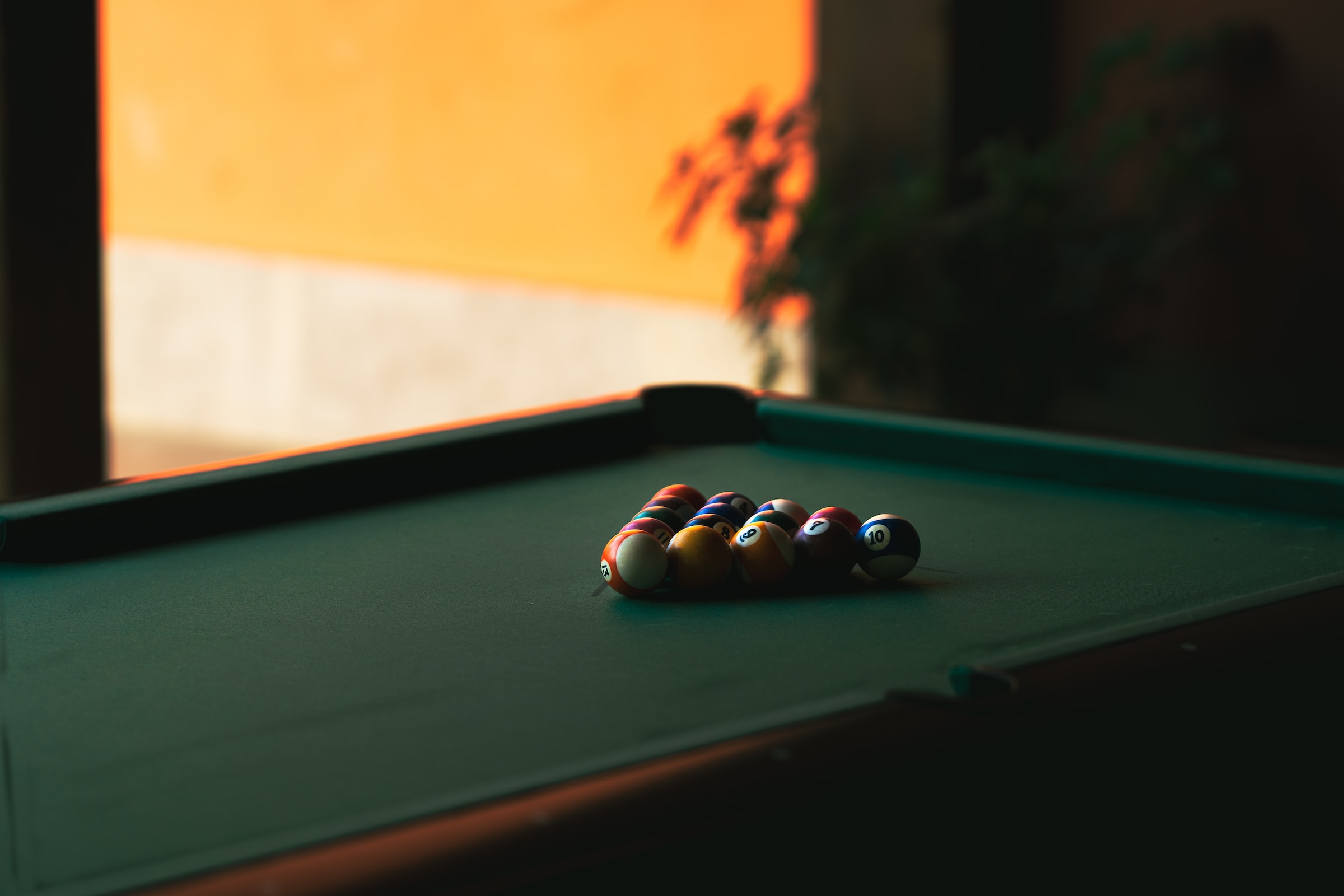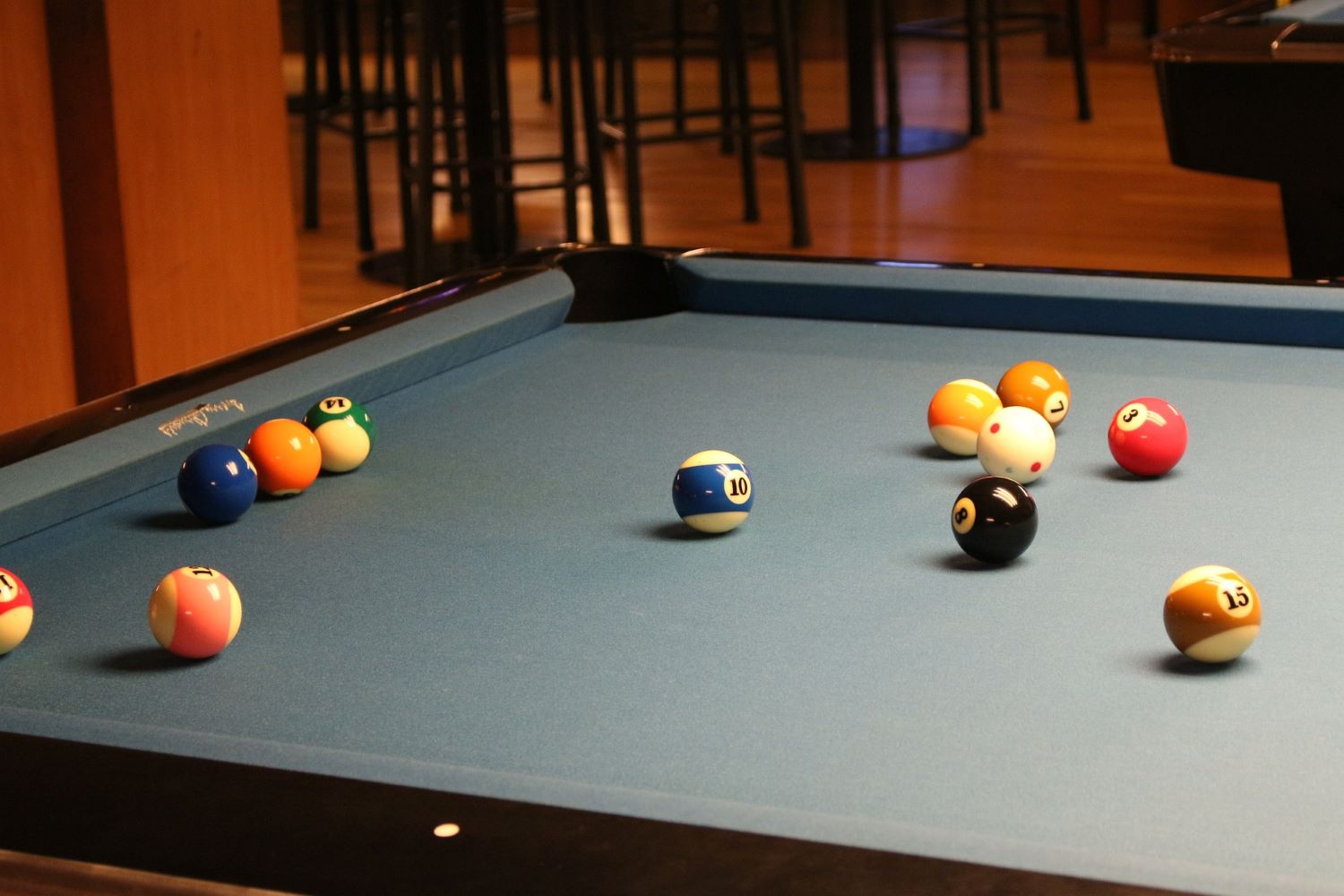
Pool, a game celebrated globally, has not only stood the test of time but has grown profoundly in its diversity and fan base. Originating from a simple pastime, it has evolved into a competitive sport with various tournaments held worldwide. A significant aspect of this game, often overlooked by the casual observer, is the size of the pool table. The dimensions of the table can drastically influence the gameplay, strategies employed, and overall enjoyment. Whether you’re an aspiring professional, a hobbyist, or someone who simply enjoys a game or two with friends, understanding the importance of selecting the right pool table size for one’s needs is crucial. In this article, we’ll dive deep into the world of pool tables, shedding light on the distinction between standard and regulation sizes and helping you make an informed decision for your next game night or professional endeavor. So, whether you’re curious about what standard pool table size means or what dimensions constitute a regulation size pool table, you’re in for an enlightening read. Let’s embark on this journey together!
Historical Context
The allure of pool, known by various names such as billiards, snooker, and others depending on regional differences and game variations, traces its roots back centuries. While the modern game with its polished wooden tables and intricate felt designs might seem sophisticated, the origins are relatively humble.
In the early days, pool was played on grass, much like croquet, and it’s believed that the term “pool” relates to a French word “poule”, which was a game where players gambled by placing money in a “pool”. It wasn’t until players took this game indoors that it began its evolution into what we recognize today. The green felt used for pool tables today is symbolic of the game’s grassy origins.
As the game transitioned indoors and grew in popularity, the need for a standardized playing field became evident. Different regions, pubs, and even countries had their own variations of table sizes. While many of these were driven by the space constraints of English pubs or the grandeur of French parlors, a standard pool table size was essential, especially as competitive gameplay became more widespread.
The 19th century saw the rise of pool and billiard halls, with a more formal setting leading to a push towards standardization. The distinction between “standard” and “regulation” size tables began to take shape during this era. “Standard” sizes often referred to what was most commonly found in homes or local establishments. In contrast, “regulation” sizes were established for competitive tournaments and official games, ensuring a consistent playing field for professional players.
The evolution of standard pool table size is not just a tale of game mechanics but also a reflection of societal changes, architectural constraints, and shifts in entertainment norms. As we proceed in our exploration, we’ll delve into the exact specifications and nuances of these sizes, making it clear why understanding this history can be vital for both casual players and enthusiasts.

Regulation Size Pool Table
When we speak of a regulation size pool table, we’re referring to the dimensions officially recognized and used in professional tournaments and competitive events. However, it’s essential to note that the term “regulation” can vary slightly depending on the specific pool game in question. For instance, while an 8-ball game and a 9-ball game might both be played professionally, the preferred table dimensions for these events might differ.
Dimensions of a Regulation Size Pool Table: The most widely accepted regulation size for a pool table, especially for games like 8-ball and 9-ball, is 9 feet in length by 4.5 feet in width. This gives a playing surface – the area inside the cushions – of approximately 100 inches by 50 inches.
Significance of the Regulation Size: The importance of adhering to this size for professional tournaments cannot be overstated. It ensures a uniform and consistent playing field for all competitors, allowing skills to be the differentiating factor rather than any peculiarities or advantages a non-standard table might offer.
Furthermore, practicing on a regulation size pool table can prepare aspiring professionals for the real challenges they’ll face in competitions. The larger size requires more precision, stronger cueing techniques, and strategic ball placement, honing a player’s skill set to the highest standard.
Variations Across Different Pool Games: As mentioned earlier, the term “regulation” can differ based on the pool game variant. For example:
- Snooker: This game, which requires a larger table due to the smaller balls and the need for more precise shots, uses a table size of 12 feet by 6 feet in most professional settings.
- Carom or Three-Cushion Billiards: Traditionally played on tables without pockets, these games often use tables measuring 10 feet by 5 feet.
While the term “regulation size” might seem straightforward, it is nuanced and dependent on the specific game type. Whether you’re an aspiring pool shark, a casual player, or someone just looking to equip their game room properly, understanding these differences can significantly impact your gameplay experience and future prospects in the sport.
Common Standard Pool Table Sizes
While the world of professional pool mandates precise table dimensions, the landscape is a tad different when we step into homes, local clubs, and recreational centers. Here, the term “standard” takes on a more flexible definition, referring more to what’s commonly found rather than what’s officially prescribed. Let’s delve into the diverse range of standard pool table sizes that cater to various spaces, budgets, and gameplay preferences.
7-foot pool table (Bar Box): This compact table, often found in bars and smaller recreational areas, measures approximately 7 feet by 3.5 feet. It offers a playing surface of around 78 inches by 39 inches. Due to its smaller size, it’s perfect for casual games and tighter spaces, making it a popular choice for social settings where pool is more of an entertaining sideline than a serious pursuit.
8-foot pool table (Home or Standard): One of the most widespread sizes for home use, the 8-foot table strikes a balance between playability and space considerations. With dimensions roughly around 8 feet by 4 feet and a playing area close to 88 inches by 44 inches, it offers a more generous playing field than the bar box but still fits comfortably in many home game rooms.
9-foot pool table (Tournament): While often considered a regulation size for many professional events, the 9-foot table is also a favorite among enthusiasts and advanced players who want to practice at home. Measuring around 9 feet by 4.5 feet with a playing surface of 100 inches by 50 inches, this table provides a challenging landscape that closely mirrors professional settings.
Other sizes (e.g., 10-foot and 12-foot for snooker): Apart from the standard American pool tables, there are larger tables, specifically for games like snooker or carom. As mentioned earlier, snooker tables can be as large as 12 feet by 6 feet, while carom tables hover around the 10-foot mark.
In summary, while the term “standard” might suggest uniformity, the world of pool tables is rich in diversity. Your choice will often hinge on space availability, gameplay preferences, and, of course, budget considerations. Remember, the size of the table not only influences the game’s difficulty but also the strategies players employ. So, whether you’re looking for a casual game with friends or gearing up for the big leagues, there’s a standard size pool table just right for you.

Factors Influencing Pool Table Size Choice
Choosing the right pool table can be a delightful yet daunting task. Given the investment, both in terms of money and space, it’s essential to factor in various considerations before making a decision. Here are some pivotal factors that influence the choice of pool table size:
Space Availability: Perhaps the most obvious and critical factor is that the size of the room dictates the table size. It’s not just about fitting the table; you also need ample space around it for players to move and take shots without hindrance. As a rule of thumb, consider at least 5 feet of space on all sides of the table. This ensures players can fully extend and use their cues without hitting walls or other obstacles.
Player’s Skill Level: For beginners, a smaller table might be more approachable, with fewer complexities and easier potting. Advanced players, on the other hand, may prefer larger tables, mimicking tournament conditions, challenging their skills, and refining their techniques.
Intended Use: Is the table for casual games during family gatherings, a centerpiece in a game room, or serious practice for tournaments? If it’s purely recreational, a standard size pool table might suffice. However, serious players or those aspiring to join tournaments might lean towards the regulation size pool tables.
Budget Considerations: Larger tables, especially those made with high-quality materials and craftsmanship, can be significantly more expensive. Consider your budget constraints. Sometimes, opting for a smaller but better-quality table can be more beneficial than stretching for a larger but lower-quality one.
Aesthetic and Architectural Considerations: Beyond practicality, there’s the visual appeal. How does the table fit within the room’s decor? A massive table in a small room can feel overwhelming and out of place, while a smaller table in a vast room might seem lost.
Type of Pool Game Preferred: As discussed earlier, different pool games sometimes require different table sizes. If you’re a snooker enthusiast, for instance, you might be leaning toward the larger 12-foot tables. Similarly, Carom fans might be considering the 10-foot options.
Future Considerations: Think about the long term. If you’re planning to move to a bigger place or believe your interest in pool will grow, investing in a larger table might make sense. Conversely, if it’s a fleeting interest or there’s a possibility of downsizing your living space, a more compact table could be the way to go.
Selecting the right pool table size isn’t just about the dimensions; it’s about aligning the table with your needs, aspirations, and constraints. By weighing these factors, you can ensure your investment brings countless hours of joy, challenge, and camaraderie.
Frequently Asked Questions (FAQ)
Choosing, installing, and maintaining a pool table comes with its fair share of questions. Let’s address some of the most commonly posed queries in the world of pool tables.
How much space do I need for my pool table?
Beyond the table’s dimensions, you need ample space for cueing. A general rule of thumb is to allow at least 5 feet on each side of the table. For example, for a 9-foot table, a room size of at least 19 by 14.5 feet is recommended.
How often should I replace the felt?
Under normal conditions, a pool table’s felt should last between 3 to 5 years with regular play. However, if you notice significant wear, tears, or inconsistencies in ball movement, it might be time for a change.
Can I move my pool table after installation?
Moving a pool table, even slightly, can disrupt its level and alignment. If you must move it, especially over a considerable distance, it’s recommended to seek professional help to dismantle, transport, and reassemble.
What’s the difference between “standard” and “regulation” size?
A “standard” size often refers to what’s commonly found in homes and recreational settings, like 7-foot or 8-foot tables. “Regulation” size, used in professional tournaments, typically refers to the 9-foot tables.
Can I use any type of vacuum to clean my table?
It’s best to use a handheld vacuum in a gentle setting. Avoid standard vacuums with rotating brushes, as they can damage the felt. Read our pool table maintenance guide.
Is outdoor placement suitable for a pool table?
While there are specially designed outdoor pool tables, most traditional tables are meant for indoor use. Exposure to elements like sun, rain, and fluctuating temperatures can damage a regular pool table.
How heavy is a standard pool table?
Pool tables can weigh between 500 and 1,200 pounds depending on their size, materials, and slate thickness.
Can I play different billiard games on my pool table?
Absolutely! While certain games like snooker have their preferred table sizes, many billiard games can be played on any standard table. The key is to adapt and adjust strategies based on the table size.
How can I ensure consistent ball bounce?
Ensure the table is level, periodically inspect the cushions for wear, and maintain a clean playing surface. Over time, you might need to replace old cushions to maintain consistent bounce.
How do I protect my table from pets or young children?
Using a robust table cover is the first line of defense. Also, establish ground rules for areas around the table, ensuring pets or young ones don’t inadvertently damage or stain it.
While this FAQ section covers the basics, remember that each pool table, like its owner, is unique. Always refer to the manufacturer’s guidelines or consult with pool table experts for specific queries or concerns.

Conclusion
Understanding the intricacies of pool table sizes and their implications is about appreciating the nuanced world of billiards. While the concept might seem straightforward on the surface, the table’s dimensions influence not only the game’s dynamics but also the surrounding environment and player experience.
Whether you’re an aspiring professional aiming for the regulation size pool table or a hobbyist seeking the perfect addition to your game room, knowledge is power. By familiarizing yourself with the standard pool table size, their historical context, and the factors influencing their choice, you arm yourself with the information needed to make an informed decision.
Beyond size, the anatomy of the table, its care, and the common questions surrounding it paint a comprehensive picture of what it means to own and cherish this centerpiece of recreation. In essence, a pool table is more than just a piece of furniture; it’s a gateway to countless memories, challenges, victories, and lessons.
As you embark on or continue your billiards journey, let this guide be a testament to the profound impact of choosing the right table. Dive deep, research well, and may every game you play echo the precision and thoughtfulness with which you’ve selected your table. Happy cueing!